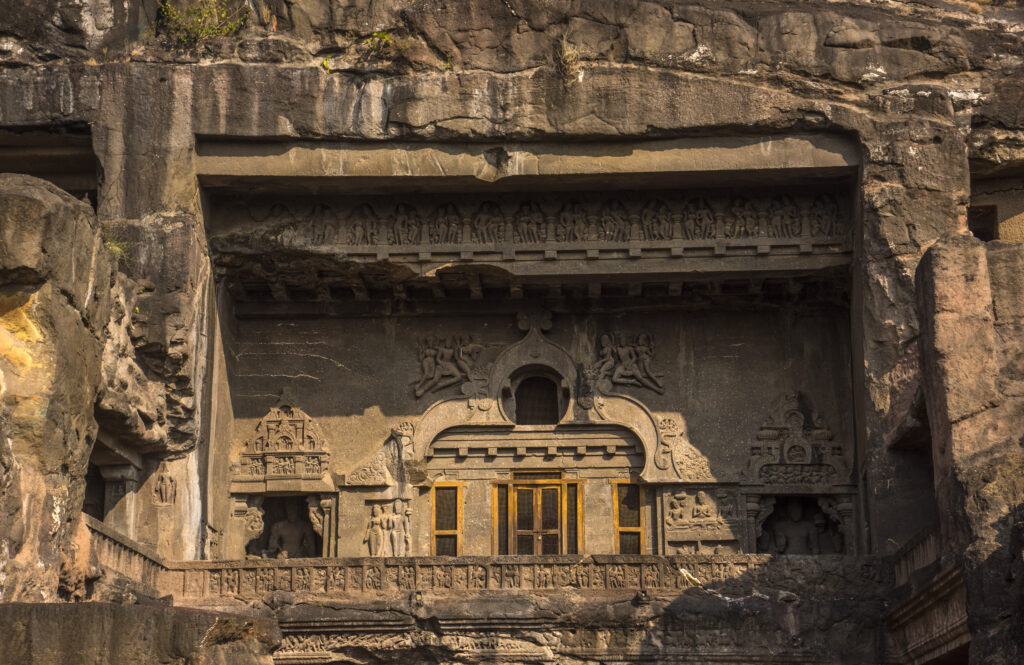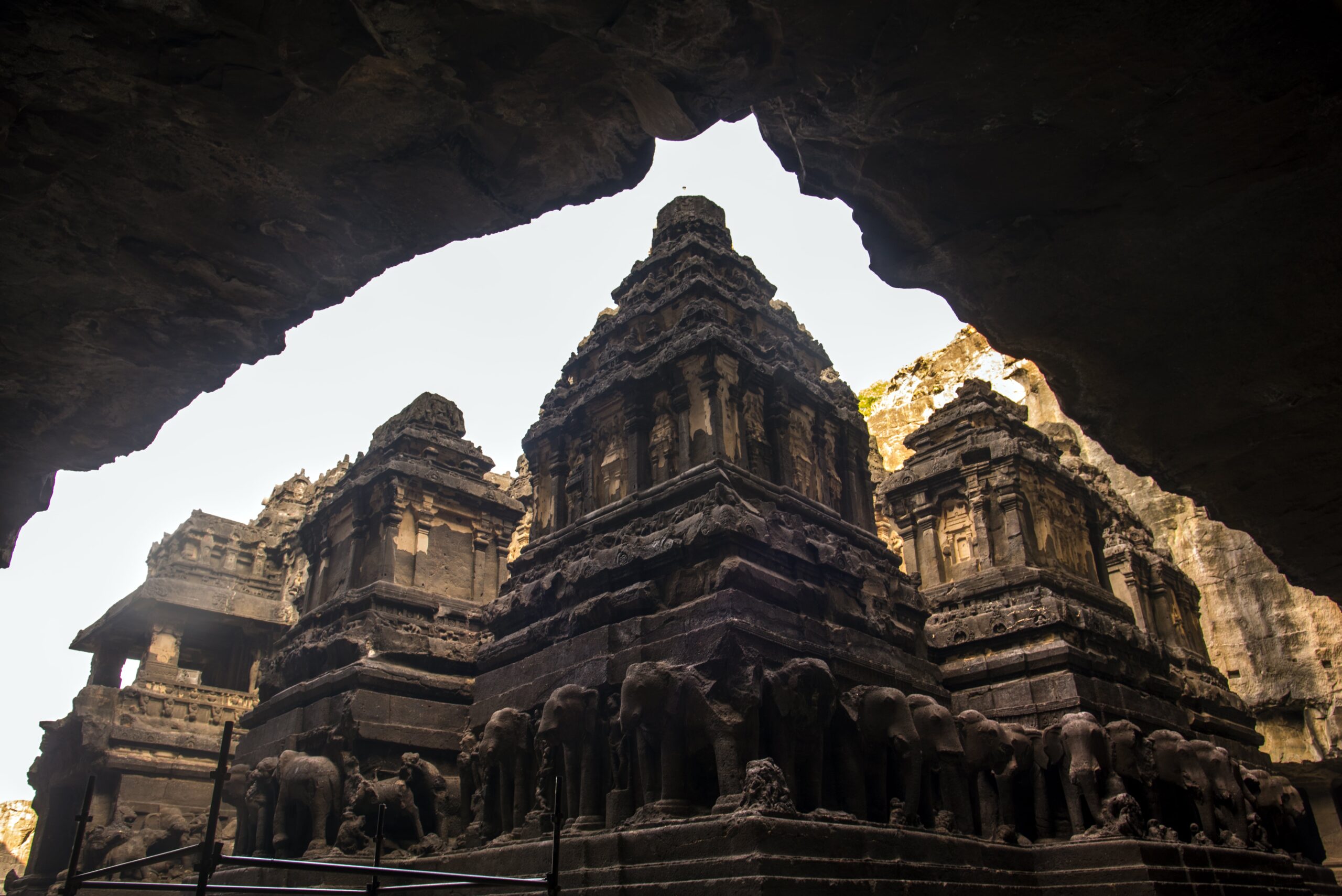Nestled within the Ellora Caves of Maharashtra, the Kailasa Temple stands as a testament to ancient ingenuity and artistry. Carved from a single rock, this temple continues to amaze visitors with its size, intricate architecture, and the mysteries that shroud its creation. Join us as we delve into the fascinating world of the Kailasa Temple, exploring its history, architectural brilliance, and the enigmatic legends that surround it.
The Rich History of the Kailasa Temple
The Kailasa Temple, also known as Kailashanatha Temple, is the largest of the rock-cut Hindu temples at Ellora. Most historians attribute its construction to the Rashtrakuta king Krishna I, who reigned from 756 to 773 CE. While there is no direct inscription linking him to the temple, various epigraphs suggest his patronage. The temple’s construction showcases influences from Pallava and Chalukya architectural styles, hinting at the diverse artistic collaboration involved.
The Mystery Behind the Kailasa Temple’s Construction
One of the most intriguing aspects of the Kailasa Temple is the mystery of its construction. Legends speak of an architect named Kokasa, who carved the temple from the top down to fulfill a queen’s vow in record time. This method defies the traditional bottom-up construction seen in most ancient temples. Scholars are still puzzled by how laborers managed to remove around 2 lakh tons of rock with such precision, without leaving any trace of the debris.
The Marvelous Architecture of the Kailasa Temple
The architectural brilliance of the Kailasa Temple is truly awe-inspiring. Carved from a single rock, the temple features a multi-storied gateway, intricate sculptures, and a central shrine dedicated to Lord Shiva. The temple’s U-shaped courtyard is edged by a columned arcade and adorned with panels depicting scenes from the Ramayana and Mahabharata. The grand Nandi Mandapa, a pavilion housing a statue of Nandi (Shiva’s bull), and the main shrine rest on a plinth carved with life-sized elephants, creating an illusion that they are holding up the structure.
Legends and Lore: The Mystical Tales of the Kailasa Temple
Local legends add a layer of mystique to the Kailasa Temple. One story tells of a queen who vowed to build a temple if her ailing husband recovered. The architect, Kokasa, promised to complete the temple’s spire in a week, carving from the top down to fulfill her vow. Another legend suggests that the temple was built using a mystical weapon given by Lord Shiva, capable of vaporizing stone. Such tales, though unproven, contribute to the temple’s allure and mystery.
Ellora’s Architectural Wonder: The Kailasa Temple
The Kailasa Temple is part of the larger Ellora Cave complex, which includes 34 caves representing Hindu, Buddhist, and Jain traditions. Cave 16, home to the Kailasa Temple, is the largest and most impressive of these structures. The temple’s design, blending Pallava and Chalukya styles, and its sheer scale make it a marvel of ancient engineering and artistry.

The Enigmatic Features of the Kailasa Temple
Several enigmatic features of the Kailasa Temple continue to baffle experts and visitors alike. Despite the extensive rock removal, no evidence of the debris has been found. The temple’s walls bear inscriptions in undeciphered scripts, adding to its mystique. The temple’s drainage system and the unbreakable quality of its stones further highlight the advanced knowledge of its builders.
A Testament to Human Ingenuity
The Kailasa Temple at Ellora is more than just a religious monument; it is a symbol of human ingenuity and artistic excellence. Its mysteries and marvels continue to captivate and inspire awe, reminding us of the incredible achievements of ancient civilizations. As we explore its vast chambers and intricate carvings, we are transported to a world where legend and reality intertwine, leaving us in awe of the timeless beauty and ingenuity that define the Kailasa Temple.
FAQs
What is the Kailasa Temple? The Kailasa Temple is a rock-cut Hindu temple located in the Ellora Caves of Maharashtra, India. It is known for its impressive size, intricate architecture, and the mysteries surrounding its construction.
Who built the Kailasa Temple? The construction of the Kailasa Temple is generally attributed to the Rashtrakuta king Krishna I, who reigned from 756 to 773 CE. However, various legends and epigraphs suggest the involvement of multiple rulers and artists over time.
What makes the Kailasa Temple unique? The Kailasa Temple is unique because it was carved from a single rock from top to bottom. Its architecture blends Pallava and Chalukya styles, and it features intricate sculptures and panels depicting scenes from Hindu epics.
What are some of the mysteries surrounding the Kailasa Temple? Mysteries include the method of its construction, the disappearance of removed rock debris, undeciphered inscriptions, and the temple’s unbreakable stones. Legends also add to its mystique, suggesting divine or mystical intervention in its creation.
Where is the Kailasa Temple located? The Kailasa Temple is located in Cave 16 of the Ellora Caves, near Aurangabad in Maharashtra, India. It is part of a complex of 34 caves representing Hindu, Buddhist, and Jain traditions.




